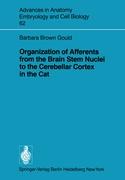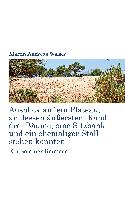- Start
- Organization of Afferents from the Brain Stem Nuclei to the Cerebellar Cortex in the Cat
Organization of Afferents from the Brain Stem Nuclei to the Cerebellar Cortex in the Cat
Angebote / Angebote:
The afferent connections of the cerebellar cortex of the cat have been extensively in vestigated by Alf Brodal and his collaborators using retrograde degeneration methods. These experiments (reviewed in Larsell and Jansen 1972) established that cerebellar corti cal afferents arise from widespread areas of the brain stem and spinal cord. Brain stem nuclei shown to provide input to the cerebellar cortex included the pontine nuclei, the medial and descending vestibular nuclei, vestibular cell group x, the lateral reticular nucleus, the perihypoglossal nuclei, the paramedian reticular nucleus, the inferior olive, and the external cuneate nucleus. In addition, the red nucleus and certain of the raphe nuclei were thought to send fibers to the intracerebellar nuclei, but not to the cortex. With the advent of the horseradish peroxidase (HRP) technique, new information on the distribution and organization of cerebellar cortical afferents has recently be come available. Thus Gould and Graybiel (1976) demonstrated that afferents to the cat cerebellar cortex arise from a previously undescribed lateral tegmental cell group at the level of the isthmus and from the intracerebellar nuclei, as well as from the classic precerebellar nuclei. Moreover, these studies showed that fibers from the vestibular nuclei, previously thought to be distributed only to the flocculonodular lobe and uvula, reach widespread areas of the cerebellar cortex. Experiments by other investi gators have established that the cerebellar cortex of the cat receives afferents from cer tain of the raphe nuclei (Shinnar et al. 1975, Taber Pierce et al.
Folgt in ca. 5 Arbeitstagen

